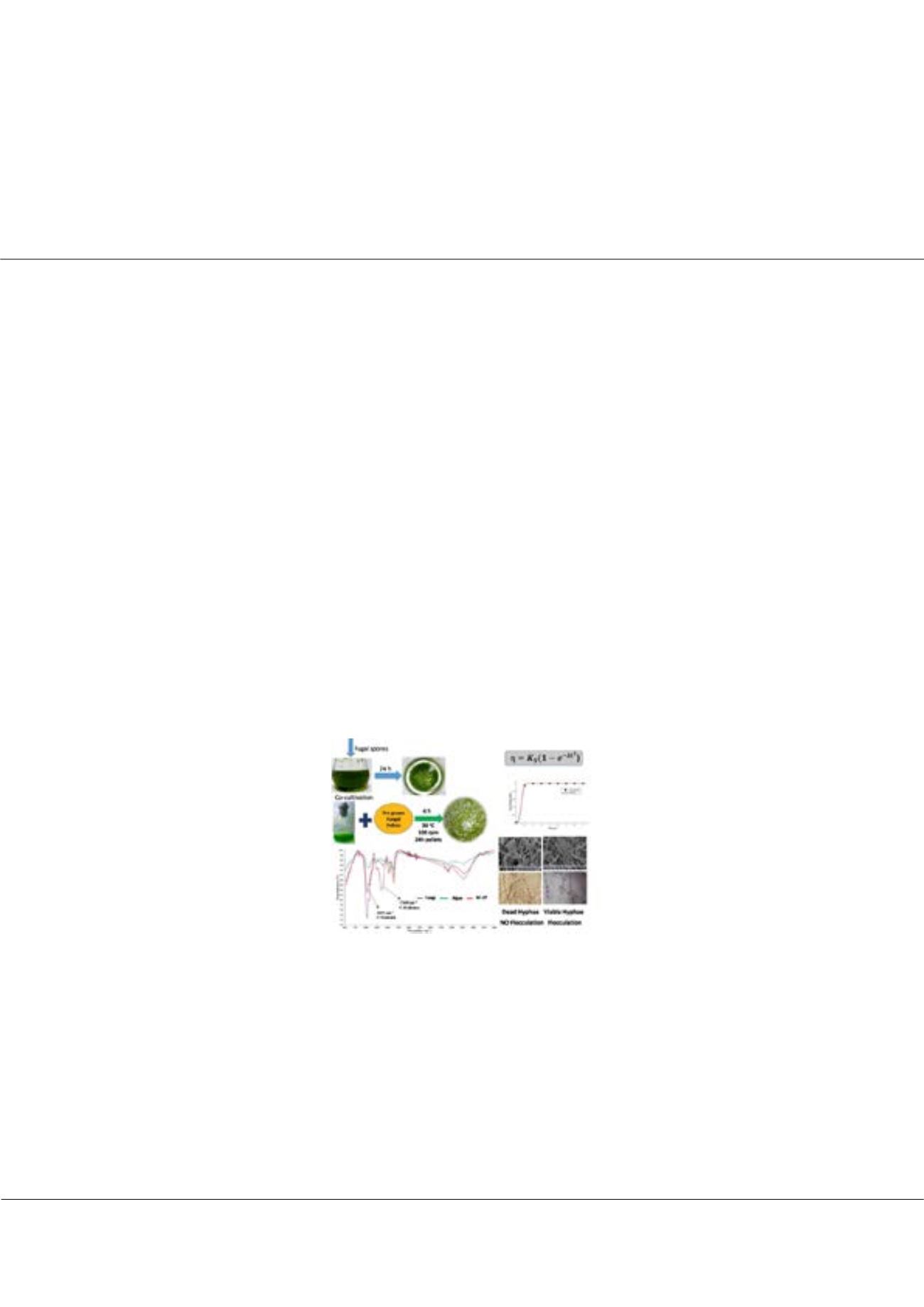

Page 55
conferenceseries
.com
Volume 9
Journal of Bioremediation & Biodegradation
ISSN: 2155-6199
Biofuel Congress 2018 &
Biomass 2018
September 04-06, 2018
JOINT EVENT
September 04-06, 2018 | Zurich, Switzerland
13
th
Global Summit and Expo on
Biomass and Bioenergy
&
12
th
World Congress on
Biofuels and Bioenergy
Algal-fungal interactions for dewatering and pretreatment of microalgal biomass targeting improved
biofuel production.
Anushree Malik
1
, ArghyaBhattacharya
1
, Megha Mathur
1
, Pushpendra Kumar
1
and Sanjeev Kumar Prajapati
2
1
Centre for Rural Development and Technology, IIT Delhi
2
Deptt. of Chemical & Biochemical Engineering, IIT Patna.
U
se of pellet forming filamentous fungi (PFFF) for algal bioharvesting presents an interesting approach to enhance the
sustainability of algal biofuels. The present work describes the critical factors governing algal-fungal interactions in
two different modes i.e. during algal-fungal co-cultivation and while using pre-cultivated algal and fungal biomass. To begin
with, identification of the limiting factors and subsequent optimization of the process during co-cultivation was attempted
using eight fungal strains (Prajapati et al., 2014). It was found that the conventional algal growth media (BG11) needs to be
supplemented with carbon and nutrient sources to support PFFF growth. Further, only Aspergilluslentulus could grow and
pelletize, resulting in nearly 100 %harvesting of Chroococcus sp. within 24 h. However, the harvesting time increased with
decrease in glucose levels. To further simplify and shorten the process time, a rapid method was developed which includes
mixing of algae with pre-cultivated fungal pellets in a prefixed ratio and optimized conditions, resulting in nearly 100%
harvesting within 4 h (Prajapati et al., 2016). An insight into the critical parameters revealed that metabolically active fungal
pellet with undamaged hyphae is a prerequisite for flocculation. FTIR data showed the involvement of specific groups (C-N
groups) in the interaction (Bhattacharya et al., 2017a). A mathematical model developed for the first time (Bhattacharya et. al.,
2017b) shows dependence on the radius of the algae and fungi along with the velocity gradient of the media. The theoretical
model showed good agreement with the experimental data. A simple incubation of harvested algal–fungal pellets under
controlled conditions was associated with significant enzyme activity due to which>54% enhancement in digestibility and up
to 50% increase in methane production during anaerobic digestion were noticed. The invented method (1593/DEL/2015) is a
unique process of its kind and has potential application in algae based biofuel production.
Recent Publications
1. Prajapati, S. K., Kumar, P., Malik, A., &Choudhary, P. (2014). Exploring pellet forming filamentous fungi as tool for
harvesting non-flocculating unicellular microalgae. BioEnergy Research, 7(4), 1430-1440.
2. Prajapati, S. K., Bhattacharya, A., Malik, A., &Vijay, V. K. (2015). Pretreatment of algal biomass using fungal crude enzymes.
Algal research, 8, 8-14.
3. Prajapati, S. K., Bhattacharya, A., Kumar, P., Malik, A., &Vijay, V. K. (2016). Amethod for simultaneous bioflocculation and
pretreatment of algal biomass targeting improved methane production. Green Chemistry, 18(19), 5230-5238.
4. Bhattacharya, A., Mathur, M., Kumar, P., Prajapati, S. K., & Malik, A. (2017). A rapid method for fungal assisted algal
flocculation: critical parameters & mechanism insights. Algal Research, 21, 42-51.
5. Bhattacharya, A., Malik, A., & Malik, H. K. (2017). A mathematical model to describe the fungal assisted algal flocculation
process. Bioresource technology, 244, 975-981.
Anushree Malik et al., J Bioremediat Biodegrad 2018, Volume 9
DOI: 10.4172/2155-6199-C1-014
















